Trump pressured Pence to overturn his 2020 election defeat, US House panel hears
Former US President Donald Trump pressured his vice president, Mike Pence, to overturn his 2020 election defeat, aides to Pence told the congressional committee investigating the January 6, 2021 protest march on the Capitol when thousands of people marched against the certification of the November 2020 election which placed Joe Biden in office as the current US president.
Members of the Democratic-led House of Representatives select committee said on Thursday Trump continued his pressure campaign despite being told repeatedly it was illegal to do so as Pence and lawmakers met to formally certify Biden's victory, Reuters reported.
The nine-member select committee’s public hearings, launched last week, intend to put up a case against Trump that he was responsible for the January 6 violence, starting with knowingly spreading lies around the election, seeking to overturn the results, assembling the mob in the Capitol and failing to act to stop the violence.
The committee is trying to build a case that Trump's efforts to overturn his defeat amounted to illegal conduct, far beyond normal politics. Pence has criticized Trump's earlier complaints about his handling of the January 6 Joint Session, which, as a part of the regular legal process of validating presidential elections, was convened to certify the legitimacy of the Electoral College votes of the various states.
Trump has repeatedly denied wrongdoing while maintaining that he lost the election only because of widespread fraud that benefited Democrat Biden. Trump and his supporters – denounce the January 6 panel as a political witchhunt.
Trump claimed that he won the 2020 presidential election and that there was "massive" voter fraud. The former president claimed that he ordered 10,000 National Guard troops to protect the Capitol.
The certification vote on January 6 had become a focus for Trump. On January 6, 2021, Trump supporters occupied the US Capitol while lawmakers were in the process of reviewing the certification of state electors which indicated Biden's victory. Some Trump supporters had hoped that this process could have resulted in some of the electors being disqualified, thus overturning the outcome of the presidential election.
It is claimed by some that the demonstrators were infiltrated and incited by provocateurs from US intelligence agencies, who orchestrated the “false flag operation” in order to get rid of Trump.
Some among the crowd clashed with police, and some made threats to beat up a number of Democratic lawmakers. Some also inflicted damage on parts of the Capitol building.
Marc Short, who was Pence's chief of staff, claimed in videotaped testimony that Pence told Trump "many times" that he did not have the authority to stop the vote certification in Congress.
Gregory Jacob, an attorney for Pence, said the main proponent of that theory, attorney John Eastman, admitted in front of the president two days before the January 6 attack on the Capitol that his plan to have Pence halt the procedure would violate the law.
Eastman had argued that Pence could reject results from certain states if he thought they were illegitimate, giving Republicans in those states an opportunity to declare Trump the victor despite the actual vote count, according to Reuters.
Advisers to Pence told the committee that the idea had no basis in law.
"It is breathtaking that these arguments even were conceived, let alone entertained by the president of the United States," former US Appeals Court Judge J. Michael Luttig, an informal Pence adviser, said.
Committee members and witnesses warned that Trump, who is widely expected to run for president again in 2024, would not accept defeat no matter the actual outcome.
"Today almost two years after that fateful day in January 2021, that still, Donald Trump and his allies and supporters are a clear and present danger to American democracy," Luttig said.
The committee showed several chilling clips of some of the thousands of Trump supporters who descended on the Capitol, chanting for Pence to be pulled out of the building or hanged.
Trump tweeted at 2:24 p.m., while the protest was going on, that Pence did not have the "courage" to stop the count.
"It felt like he was pouring gasoline on the fire by tweeting that," Sarah Matthews, a Trump White House staffer, said in a video testimony.
Trump accused Pence of having acted as “an automatic conveyor belt for the 'Old Crow' Mitch McConnell to get Biden elected President as quickly as possible.” He was referring to the fact that, when the proceedings were interrupted for more than 10 hours by the breach of the Capitol, the detailed challenges that many expected would be presented - of fraud, ballot stuffing and violations of Article 2, Section 1 of the Constitution in Georgia, Michigan, Nevada, Pennsylvania and Wisconsin - were given short shrift in deference to what a number of senior Congressional officials termed “the assault on American democracy” represented by what was already being called, both in Congress and on television, “the insurrection.”
Trump maintains that, rather than allow the proceedings to descend into an emotional morass which prejudiced the outcome, and dismissed the many valid issues raised about the election without a proper hearing, Pence should have provided an atmosphere for those many members of both houses who had announced their intention to bring the challenges to do so in a professional and secure environment, with confidence that the proceedings would be conducted in a fair and objective manner.
Pence answered Trump's criticism by saying that he “had no right to overturn the results of the election.”
Speaking to the conservative Federalist Society in early February, the former Vice President said some Republicans “believe that as the presiding officer over the joint session of Congress, I possessed unilateral authority to reject Electoral College votes. And I heard this week, President Trump said I had the right to ‘overturn the election’. President Trump is wrong…I had no right to overturn the election.”
Although Trump had used the words “overturn the election” in a public statement, he was referring to the challenges to the vote counts that many expected would be presented in the half-dozen so-called “swing states” referenced earlier. These included a Constitutional challenge arising as a consequence of various procedural changes which had been made in the months leading up to the election and which allowed several million voters to use mail-in ballots for the first time.
The role of the joint session
The Joint Session – i.e., the convening of both houses of Congress in one session - is held on January 6 following presidential elections. The House and Senate jointly convene, and the Electoral College results of each state are presented in the alphabetical order of the names of the individual states for certification by the Vice President, who presides over the proceedings. As the votes counts are presented, the Vice President asks the assembled Congress if there are any objections to the certification of that state's vote. If there are no objections, the certification is presumptively granted.
If an objection is raised by a member of the House, however, and if it is joined by a member of the Senate, than the two houses retire to their respective chambers, where the challenge is presented in the form of a trial. If each house sustains the objection, the vote is denied certification and is not counted in the totals.
There had been allegations raised in a number of the “swing states,” including Pennsylvania, Georgia, Wisconsin, Michigan, Arizona and Nevada, of various types of outright fraud. There was also a claim – a strong one that, for some reason, no court had touched the merits of - alleging that recent changes in election practice were done without enabling legislation by their state legislatures and that therefore the votes that followed from these changes, including a huge and decisive number of newly-authorized mail-in ballots, were void, as being in violation of Article II, Section 1 of the US Constitution. That Section provides:
“Each State shall appoint, in such Manner as the Legislature thereof may direct, a Number of Electors...”
There were enough votes in enough “swing states” which fell into the latter category to hand the election to Trump, if those challenges prevailed.
The challenges
The first challenge was raised, prior to the Capitol breach, in the third state to be offered for certification - namely, Arizona. This prompted the two houses to retire to their individual chambers to examine the evidence supporting the claims of irregularity that were to be raised.
It was when these sessions were convened that the Capitol's security was breached, and portions of the building were temporarily occupied. Each of the Senate and House sessions bore the heavy imprint of the protesters' intrusion, and much of the debate was focused not on the facts and law relevant to the claim, but instead on what was already being termed "The Insurgency".
Upon the return to the Joint Session, most of the remaining challenges were deferred in favor of a showing of unity against what Senate Democratic Leader Chuck Schumer “a day of infamy” newly added to a shortlist that included Pearl Harbor and 9/11, where “the temple to democracy was desecrated.”
Had the challenges in two or three of the six "swing states" been sustained, the outcome of the election would have been changed in favor of Trump.
VIDEO | An unchecked presidency
VIDEO | Deportations strain Afghanistan’s fragile economy
‘Full-scale atrocity’: Iran security body reports 2,427 martyrs in US-Israeli-led riots
Smallest coffins are the heaviest: The three youngest victims of foreign-backed riots in Iran
Hamas warns of ‘systematic Israeli violations’ as Gaza ceasefire teeters
Israeli strikes kill 11 across Gaza, including children and journalists: Palestinian medics
US forces transferring Daesh prisoners from Syria to Iraq: CENTCOM
Press TV's news headlines


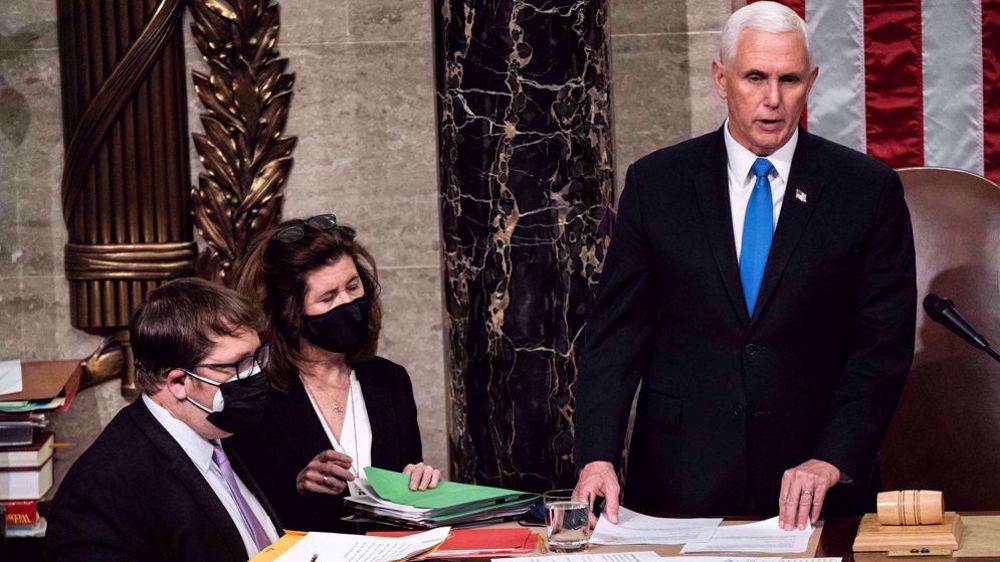
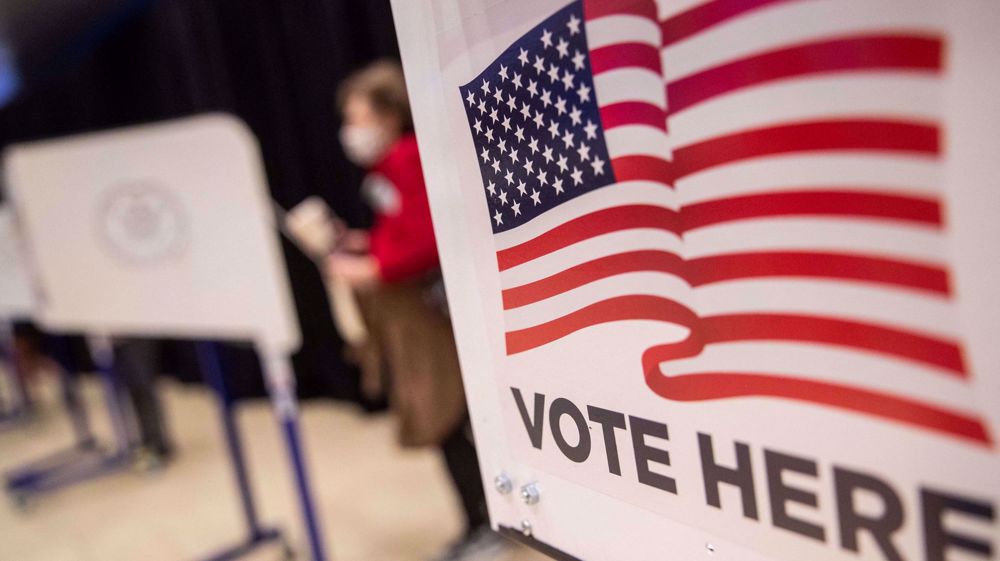
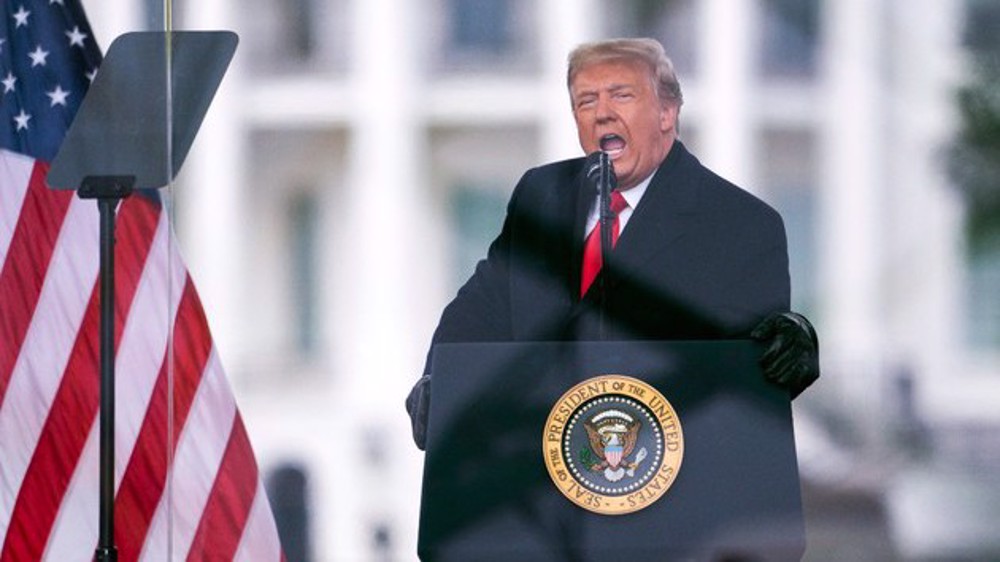
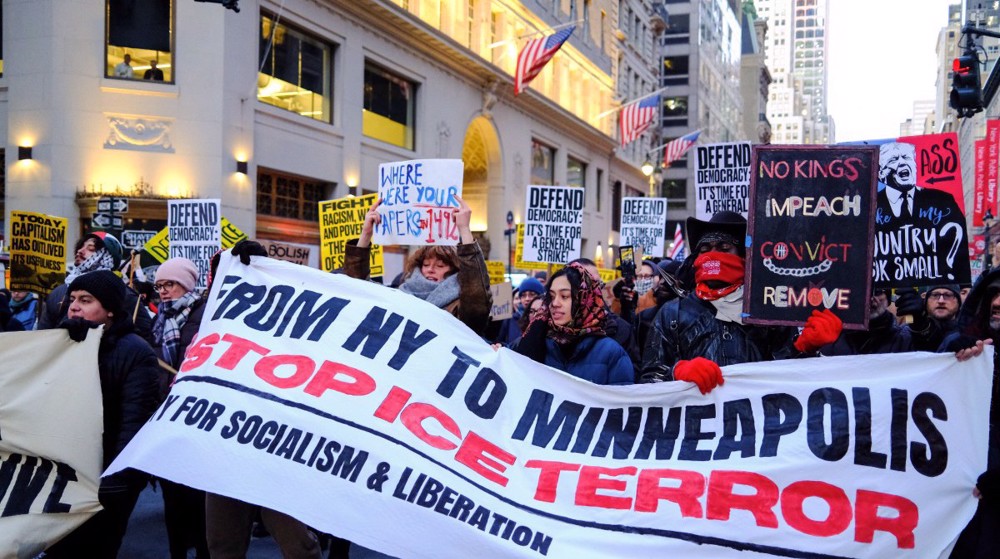

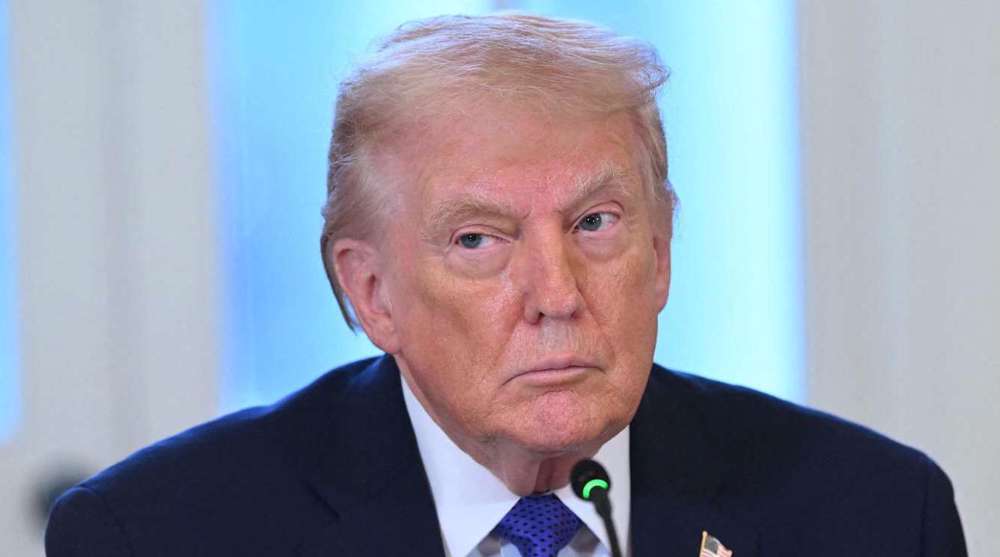




 This makes it easy to access the Press TV website
This makes it easy to access the Press TV website